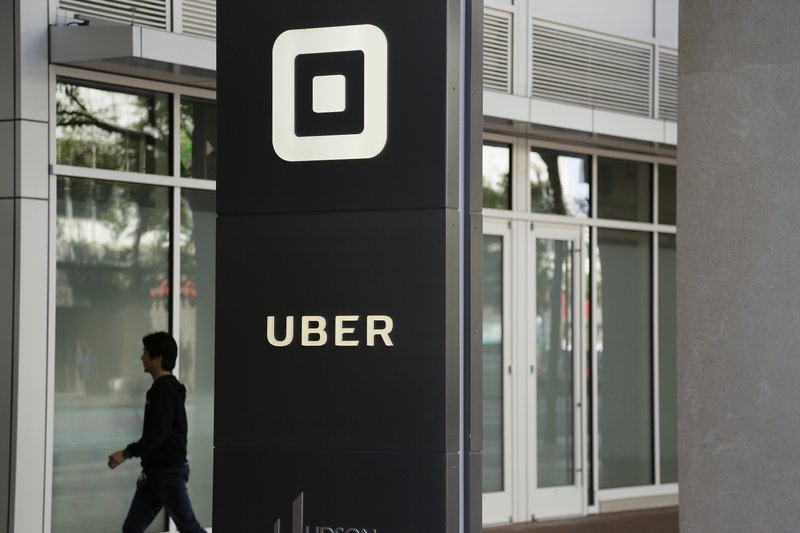SAN FRANCISCO -- Uber is providing a look under the hood of its business in the lead-up to its highly anticipated debut on the stock market next month, revealing strong growth but still struggling to overcome heavy losses.
Documents released Thursday offered the most detailed view of the world's largest ride-hailing service since its inception a decade ago. The unveiling comes four months after Uber took its first step toward its initial public offering with a confidential filing.
Thursday's filing shows Uber has been generating the robust revenue growth that entices investors but also racked up nearly $8 billion in losses over its 10 years in existence, which mirrors the same trend challenging Lyft, Uber's main rival in the U.S.
Uber's revenue totaled $11.3 billion in 2018, a 42-percent increase from $7.9 billion in 2017, and a giant leap from $495 million in 2014.
The company posted a profit of $997 million last year but that doesn't mean its ride-hailing service suddenly started to make money -- far from it. The positive result stemmed from a windfall that Uber generated from the sale of its operations in Russia and Southeast Asia. The company said it sustained an operating loss of $3 billion.
Reaching profitability has proved to be a challenge for both Uber and Lyft. Paying drivers is a big expense, and Uber's fierce competition with Lyft for customers has led both companies to offer rides below cost. Drivers for both companies complain about declining wages, and they can easily switch between platforms, making it difficult for either company to further reduce driver costs and keep fares low.
That unprofitable history may force Uber to eventually raise its ride-hailing prices unless it can reduce its costs by shifting to driverless cars or expand into other markets and lines of business.
Lyft beat Uber to the stock market last month with an initial public offering that raised $2.3 billion, but its shares have been backsliding after an early run-up. Lyft's stock currently is hovering around $61, down from its initial public offering price of $72.
The rocky start may have prompted Uber to tamp down its ambitions. The company is expected to try to raise roughly $10 billion and seeks a market value of $90 billion to $100 billion, according to The Wall Street Journal. That's below earlier estimates of $120 billion.
In its last private funding round in 2018, Uber was valued at $72 billion, according to SharesPost analyst Alejandro Ortiz.
The investment bankers handling Uber's initial public offering are expected to reveal a pricing range for Uber's shares later this month before heading into a so-called roadshow designed to drum up interest in the initial public offering among institutional investors who will be given the first opportunity to buy the stock before it begins trading on the New York Stock Exchange next month.
The per-share numbers will determine Uber's market value.
In the end, Uber is widely expected to be the biggest technology initial public offering since Chinese e-commerce giant Alibaba Group went public in 2014. And it's likely to be the largest among U.S. tech companies since Facebook took its bow on Wall Street seven years ago at a time when most people had never considered using an app on their smartphones to summon a ride from strangers driving their own cars.
Uber started in 2009 as UberCab, as a black-car service where customers could hail professional drivers with a few taps on a smartphone. It shortened its name to Uber in 2010, distancing itself from the taxicab industry, which has criticized the company for facing less regulation than the traditional taxi industry.
The company operates in 65 countries and has completed 10 billion trips worldwide.
Uber is also expanding in other markets such as food delivery and freight while offering other ways to get around with shared scooters and bikes.
But Uber faces other challenges that Lyft doesn't because of a series of damaging revelations that sullied its reputation among consumers. The setbacks have included rampant internal sexual harassment and allegations it stole self-driving car technology.
Business on 04/12/2019
